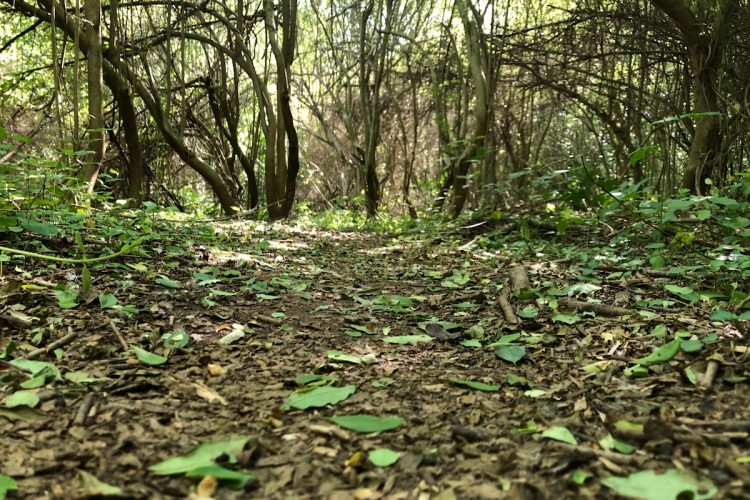
🌲 A Mountain Biker’s Guide to Nature (MBGTN) is a series dedicated to exploring the natural world that intersects with the trails we ride.
For those who mountain bike in the northern hemisphere, it’s spider season out on the trails. According to schoolofbugs.com, spiders tend to be the most active during the early autumn months, blanketing spider webs of forested singletrack in well, actual spider webs.
Over the past few weeks I’ve lost track of the number of times I’ve encountered a face full of web, which got me frustrated but curious to learn a bit more about these crafty creatures. It turns out there isn’t one species of spider responsible for building all of those often invisible, trail-spanning webs, and the spiders we encounter will vary depending on where we ride. Even within my own backyard I found large webs spun by black-, brown-, and green-colored spiders of various sizes and shapes.

Spiders can often be identified, in part, by the type of web they spin. Orb-shaped and tangled webs of thin, semi-transparent silk tend to span long distances and are the ones mountain bikers are likely to encounter when riding singletrack. Wooly webs can be easier to spot since they are more dense and white or gray in appearance, while sheet and funnel webs usually stick closer to the ground. It’s said that spider silk is five times stronger than steel, though it’s unlikely we’ll be seeing bike frames made from the stuff anytime soon.

Of course all the things that make for an effective bug-catching net — stickiness, transparency, and coverage size — mean mountain bikers have a tough time avoiding them on the trail. If you’re feeling guilty for knocking down webs with your bike as a part of your ride, keep in mind that spiders are used to rebuilding their webs throughout the day. In fact, most can spin a web in 30 minutes to an hour, which is why you may encounter new webs on a return trip down the same trail later in the day.
Now, about that scary-looking spider at the top of the article. This prolific web spinner is part of a class of spiders known as Banana spiders, and they are generally found in warmer climates. So named because they like building webs among the leaves of banana plants, most are harmless, though some varieties are known to bite humans if they are disturbed. If you’re into spotting spiders, these can often be found on trails in the southeast like Santos in Florida.

When I’m riding, I have to say spiders don’t bother me as much as their webs do. On web-infested group rides, no one is willing to stay out front for long, and the tallest rider (usually me) generally suffers the most, even at the back of the pack. I’ve cut many a ride short because a trail is just too webby to enjoy. And that’s likely just fine with the spiders.
Your turn: What are the spiders like where you ride?
























15 Comments
Sep 8, 2021
Sep 7, 2021
Sep 7, 2021
Sep 6, 2024
I don’t miss them.
We would argue about who was breaking trail each ride.. Good times!!
Sep 15, 2021
Sep 10, 2021
Sep 10, 2021
Sep 5, 2024
Sep 8, 2021
Jan 10, 2022
I've developed a way to keep the webs out of my face that I've been using for a few years and it works really good. I've been considering mass producing these and distributing through bike shops, but would like to find out if there's any interest before investing a lot of money into it.
Jan 10, 2022
Jan 10, 2022
Aug 10, 2022
Sep 7, 2021
Oct 6, 2021